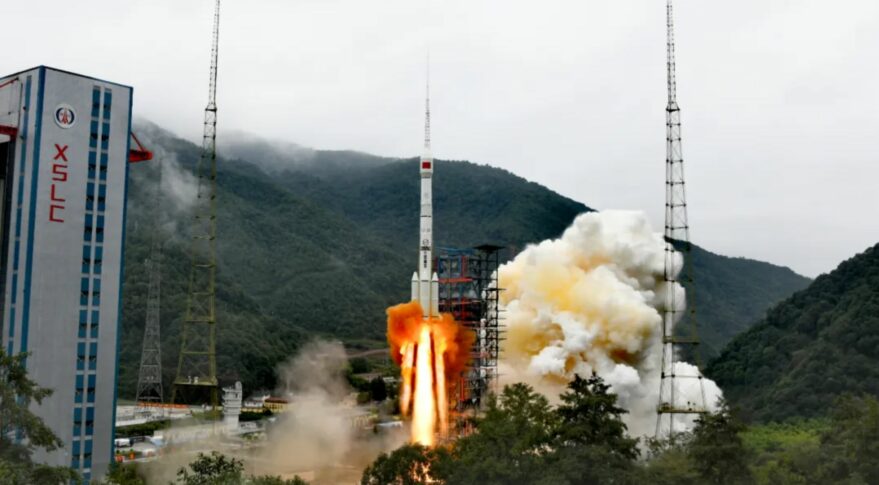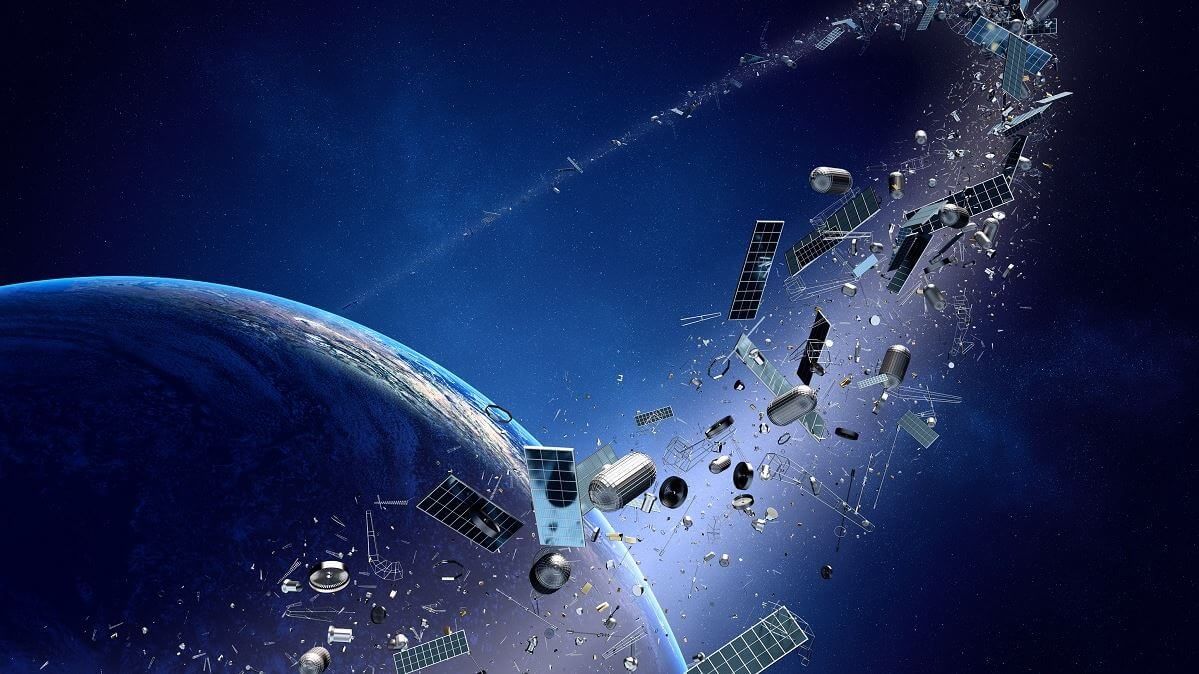China achieved a milestone in space technology last month when it launched the Shijian-21 satellite. Beijing claims this satellite is tasked with verifying space debris mitigation technology.
However, there is a lack of information in this regard, since China normally keeps its lips sealed when it comes to military and strategic missions.
The launch of Shijian-21 came only hours before President Xi Jinping addressed a military conference in Beijing, where he urged scientists to “break new ground” in weapon development in order to build a “world-class” force.
Foreign military experts believe this satellite, developed by the Shanghai Academy of Spaceflight Technology, would be used to “grapple” and eliminate other satellites as part of China’s strategy to gain superiority in space.
According to an initial report from SpaceNews, the US Space Force has discovered an unknown object circling in parallel with China’s new Shijian-21 spacecraft.
The 18th Space Control Squadron of the United States Space Force categorized it as an “Apogee Kick Motor (AKM)” and issued it the designation 2021-094C.
An Apogee kick motor is a rocket motor used on artificial satellites to deliver the final impulse needed to alter the trajectory from transfer orbit to final orbit. However, rather than maneuvering out of the way to avoid colliding with other satellites, as is standard procedure for AKMs, the object remains in a geostationary orbit adjacent to Shijian-21.

The peculiar scenario is generating more concerns than it is giving answers. For instance, there is no information if the mysterious object is an AKM or is connected to a completely separate activity.
The object could be performed to evaluate rendezvous and proximity activities, as well as refueling tests and manipulation with a robotic arm or other means.
‘Satellite Killer’ Or Space Debris Cleaner?
China claimed that Shijian-21’s mission is to reduce and eliminate space junk. Analysts, on the other hand, believe it may be employed as a weapon capable of seizing and smashing American satellites, according to The Washington Times.
The launch took place at 9.27 a.m (Beijing time) on October 23, making it China’s 39th orbital launch attempt of the year. About two and a half minutes into the flight, the Long March 3B rocket soared southwest from the Xichang launch pad, dumping its four liquid-fueled boosters and first stage over Chinese territory. Before delivering the Shijian 21 satellite into orbit, a second-stage engine completed the rocket’s mission.

In April, Gen. James Dickinson, the commander of the US Space Command, told Congress that spacecraft like the Shijian-21 are part of China’s goal to gain “space superiority through space and space-attack systems”.
He further explained that space-based robotic arm technology could be used in a future system for grappling other satellites. Dickinson added that China is also building a wide range of jamming and cyberspace capabilities, as well as direct energy weapons, on-orbit capabilities, and ground-based anti-satellite missiles. All of these might obstruct US military operations.
Iran and North Korea, according to Dickinson, are also strengthening their electronic warfare capability to jam GPS.
US Is Deeply Worried
The US military is deeply concerned about China’s rapid advancements in space technologies, particularly the latter’s anti-satellite (ASTA) capabilities. It is largely because GPS is used to position, navigate, and synchronize the entire US military operation, including the weapons like aircraft carriers, fifth-generation fighters, tanks, and missiles.
If digital communication is blocked, the US military dominance might be compromised rapidly.
According to China, the Shijian-17, or SJ-17, is an experimental satellite that can provide telecommunications and broadcast services as well as track space debris. Western think tanks, such as the Center for Strategic and International Studies in Washington, have highlighted its “abnormal behavior” while in orbit.

According to a Congressional Research Service report, China’s military modernization has concentrated less on battlefield obliteration and more on attacking enemy satellites and telecommunications networks to “prevent enemy nation forces from linking weapons systems and ability to share data and information”.
According to the report, China’s military developed the Strategic Support Force in 2015, which combines cyber, space, and electronic warfare functions used by the country’s ground, air, navy, and missile units.
Space Arms Race
China is hell-bent on dethroning the United States as the world’s main space power. Despite proclaiming its ambitions as peaceful, Beijing’s strategy sees space as a military domain, and it is significantly engaging in space infrastructure.
The United States has been a #space faring nation for decades, yet China & Russia have *weaponized* it. That’s why @SpaceForceDoD & @US_SpaceCom will protect and defend #American assets & interests in space & sustain our way of life. pic.twitter.com/nEr9Wwm2Qt
— Archive: Dr. Mark T. Esper (@EsperDoD) May 18, 2020
The US military had previously expressed worries about China’s ASAT capabilities, including the Shijian-17. Since its launch in 2016, the satellite’s robotic has performed a few odd moves. Furthermore, China just conducted a hypersonic missile test, which the US described as akin to the Sputnik moment.
China’s counter-space activities have compelled the United States to take steps to safeguard itself from what then-Secretary of Defense Mark Esper correctly termed “space weaponization.”
Soon after, the United States Space Force was constituted as the sixth independent branch of the military by the 2020 National Defense Authorization Act in response to the threat posed by possible enemies to American space-based assets.
- Contact the author at ashishmichel@gmail.com
- Follow EurAsian Times on Google News




